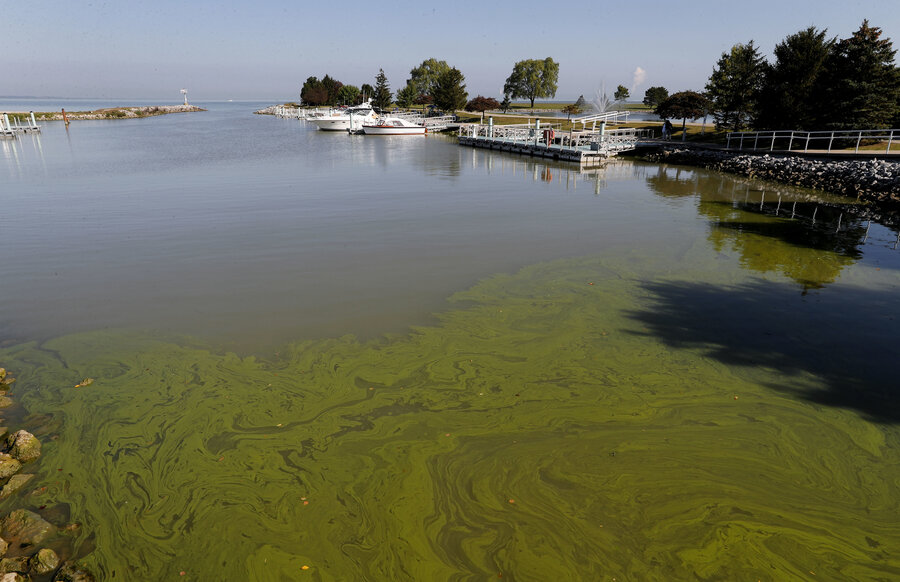Congress pushes to protect funding for major waterways
Loading...
| Traverse City, Mich.
President Trump has gotten nowhere in his push to kill federal support for cleaning up some of the nation's most prized waterways, as the United States House and Senate decided Thursday to keep funding at current levels – and in some cases, boost it.
A $1.3 trillion spending package that made its way through Congress includes nearly $448 million for Environmental Protection Agency programs benefiting regional waters degraded by pollution, overdevelopment, and exotic species invasions. That's an increase from $436 million in this year's budget.
By far the biggest recipient is the Great Lakes Restoration Initiative, which again would get $300 million. It has averaged roughly that amount annually since it was established in 2010 to accelerate removal of toxins in river sediments, fight invaders such as Asian carp, and prevent runoff that causes algae blooms.
Mr. Trump called for eliminating its funding last year and cutting it by 90 percent this year, only to be rebuffed as lawmakers from both parties jumped to its defense. They also spared nearly a dozen similar programs benefiting Chesapeake Bay, the Gulf of Mexico, Puget Sound, San Francisco Bay, and other iconic waters, which the president's budget had recommended killing or cutting to the bone.
The spending bill cleared the House on Thursday and the Senate early Friday morning.
The programs' likely survival illustrates yet again that even in a highly polarized Congress, partisanship often stops at the water's edge.
"There's an understanding that we're all connected from sea to shining sea," said Caitlin Sweeney, director of a public-private partnership called the San Francisco Estuary Project that rebuilds wildlife habitat and works on a variety of pollution issues.
Trump's administration argues that such programs are "primarily local efforts" for which state and local governments should pay. Their supporters counter that federal funding is essential and often prompts matching contributions from other sources.
"You simply are not going to make the restorations, improvements, and protections that are needed unless you have that federal investment," said Todd Ambs, director of the Healing Our Waters-Great Lakes Coalition, which represents more than 140 organizations in eight states, from New York to Minnesota.
The Great Lakes initiative, which has funded more than 3,500 projects, is popular with voters who appreciate clean beaches, good fishing, and other benefits, Mr. Ambs said.
"Every member of Congress from the region can point to a few projects in their district that have brought tangible improvements to the environment and, in most cases, the economy," he said. "That's not lost on any of them."
Aside from the Great Lakes, those staying at their current levels would include Chesapeake Bay, San Francisco Bay, Puget Sound, South Florida, Lake Pontchartrain in Louisiana, and estuaries in southern New England.
"The Bay is making progress and our legislators know how important it is to keep doing what works, especially when it is grounded in science," said William C. Baker, president of the Chesapeake Bay Foundation. The bay's program will get $73 million.
Programs benefiting the Gulf of Mexico, New York's Long Island Sound, and Lake Champlain in New York and Vermont would get funding increases under the bill. The Gulf's total would jump from $8.5 million to $12.5 million.
"It's a pretty good signal when the Congress says, 'We'll see you one and raise you one,' " said Steve Cochran, who deals with Gulf of Mexico protection for the Environmental Defense Fund.
This story was reported by The Associated Press.







